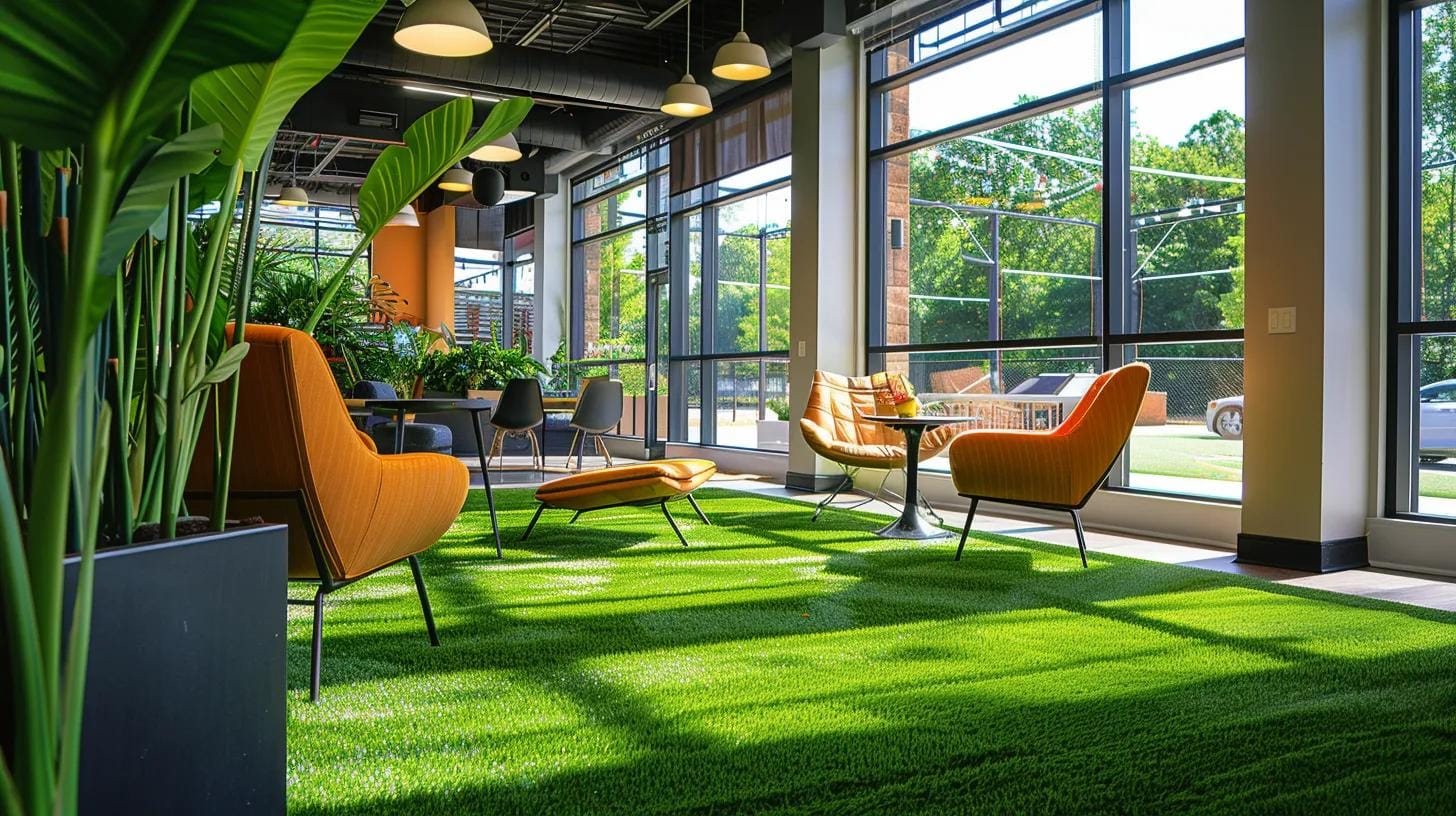In bustling areas like Roswell, business owners are always looking for smart ways to keep their properties looking sharp without adding extra upkeep. One increasingly popular solution? Artificial turf. Whether it’s for storefronts, office complexes, or hospitality venues, synthetic grass offers a polished, green appearance year-round—without the cost or hassle of mowing, watering, or reseeding. Beyond its curb appeal, artificial turf provides durability, environmental benefits, and long-term savings, making it a practical investment for commercial spaces that want to stand out while staying low-maintenance.
Roswell’s Smart Choice: Why Commercial Spaces Love Artificial Turf
Boosting Curb Appeal: Artificial Turf for Roswell Businesses
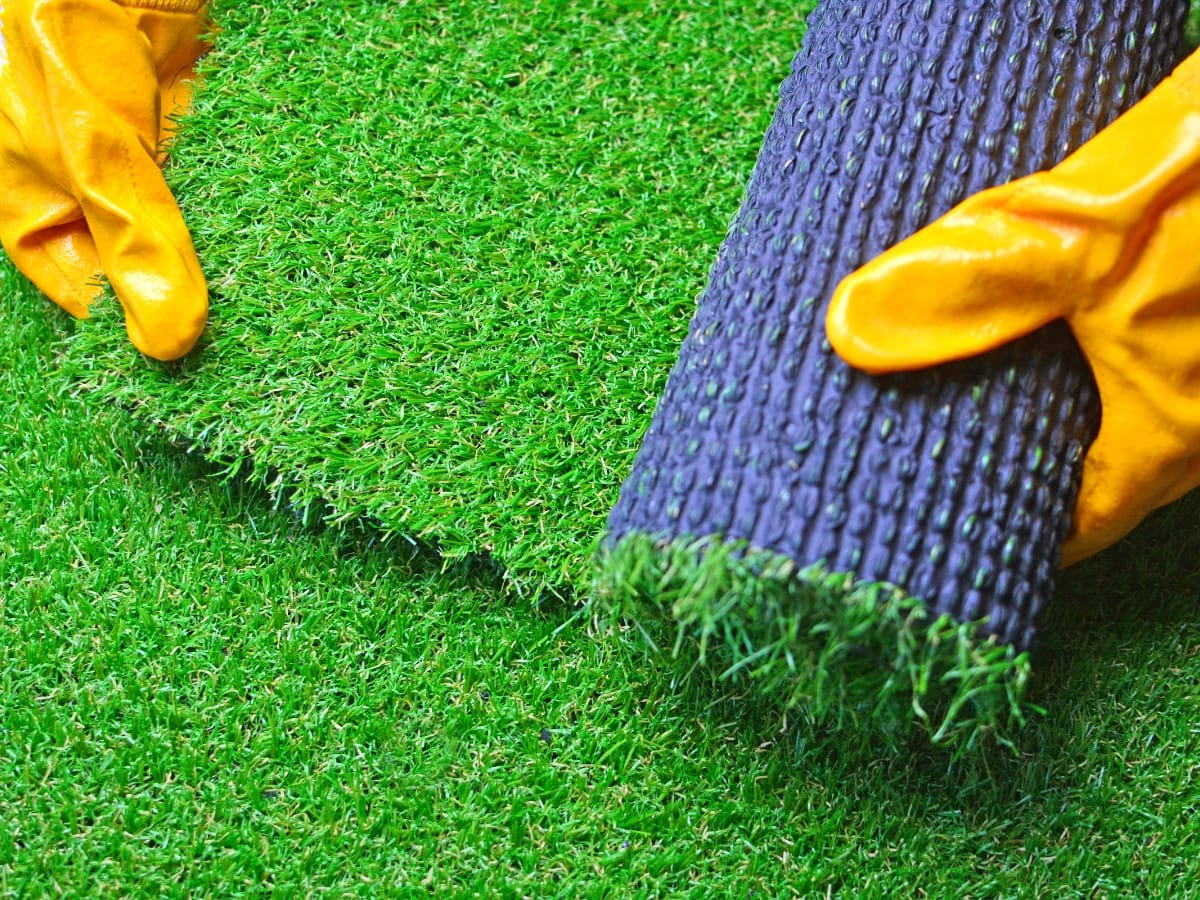
Artificial turf delivers a consistently vibrant appearance without the effort required by natural grass. For commercial properties in Roswell, where curb appeal and brand image matter, a green lawn year-round projects professionalism and attention to detail. Unlike living turf, synthetic surfaces stand up to heavy foot traffic, vehicle routes, and outdoor events without developing bare spots or muddy patches. This durability means that outdoor areas remain inviting and functional, whether they host customer gatherings, outdoor dining, or staff break zones.
Reduced Maintenance Efforts and Lower Operating Costs
One of the biggest appeals of artificial turf is the dramatic cut in maintenance work. Property managers no longer need to schedule mowing, edging, or mulching, and there is no demand for routine fertilizing or pest control. Irrigation systems can be downsized or eliminated altogether, which translates into significant water savings—an important consideration in Roswell’s dry summer months. Occasional rinsing to clear dust or debris and a light brush to lift fiber blades are usually all that’s required to keep the turf looking fresh. Studies have found that properties with synthetic turf can save up to 70 percent on maintenance expenses compared to natural lawns.
Performance in Roswell’s Climate
Roswell’s hot, sunny weather and sporadic rainfall patterns pose challenges for live grass, which can brown or thin out without constant irrigation. Artificial turf maintains its color and texture even under intense sunlight, thanks to UV-resistant fibers that guard against fading. Engineered drainage layers beneath the turf quickly channel away rainwater, preventing pooling and slip hazards. During temperature spikes, specially designed infill materials help reflect heat and keep the surface cooler underfoot. This consistent performance makes synthetic lawns a reliable choice for businesses that cannot afford downtime or unsightly landscaping issues during peak seasons.
Aesthetic Flexibility and Design Integration
Beyond practical benefits, artificial turf offers design freedom that natural lawns cannot match. It can be cut precisely to fit unique layouts, wrap around planters and seating areas, or integrate seamlessly with pavers and stone patios. Color tones and fiber lengths can be tailored to match surrounding plantings or architectural finishes, blending branded color schemes with outdoor environments. Even in shaded corners where real grass struggles, synthetic turf remains lush and uniform. This versatility lets landscape designers create striking outdoor lounges, green pathways, or play spaces that reinforce a company’s visual identity.
How Does Artificial Turf Contribute to Water Conservation in Roswell?
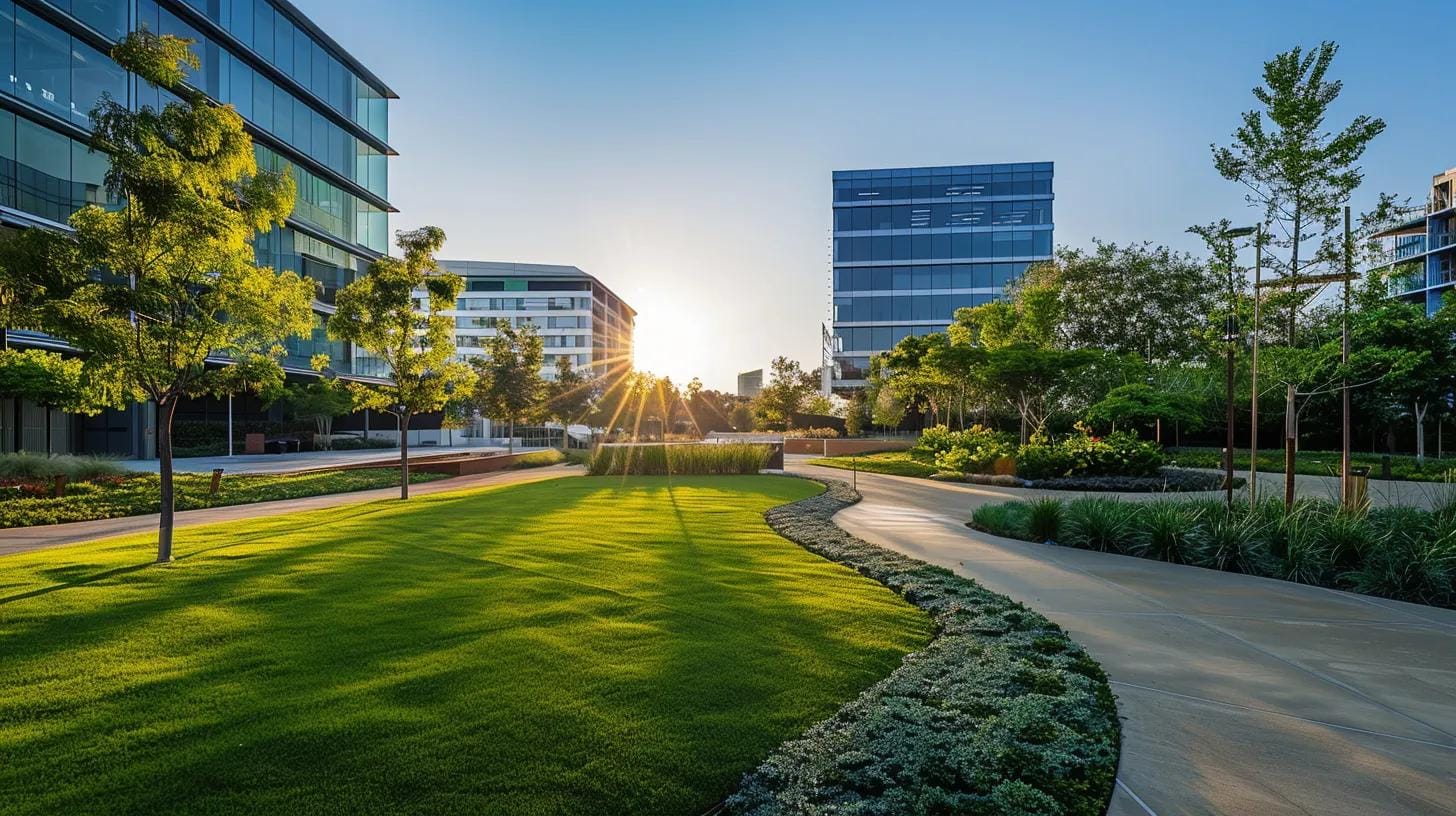
Artificial turf removes the need for regular watering, which is especially valuable in Roswell’s hot summers and variable rainfall. Traditional lawns often demand several inches of irrigation each week to stay green, but synthetic turf stays lush year-round without a drop of extra water. By installing artificial grass, commercial properties can slash their outdoor water consumption, easing pressure on municipal supplies and trimming utility bills in the process.
Water Savings Compared to Natural Grass
On average, replacing one acre of natural turf with artificial grass saves between 20,000 and 75,000 gallons of water every year. That range reflects differences in local weather patterns and irrigation practices, but the overall impact is clear: synthetic surfaces require no watering cycles, no sprinklers, and no hand-held hoses. For businesses managing large grounds or multiple sites, those savings add up quickly. Instead of budgeting for peak-season watering, property managers can reinvest those resources into other landscaping improvements or energy-efficient upgrades.
Reduced Need for Chemicals
Grass lawns typically depend on fertilizers, herbicides, and pesticides to maintain a uniform appearance and fend off weeds or pests. Each chemical application carries the risk of runoff into storm drains and nearby waterways. Artificial turf, by contrast, has no soil bed and no living vegetation, so it never needs nutrient treatments or weed killers. That reduction in chemical use not only lowers ongoing maintenance costs but also supports healthier runoff and a cleaner local environment.
Commercial Spaces That Benefit Most From Artificial Turf

Artificial turf adapts to a wide range of commercial settings, delivering both visual appeal and practical advantages. Its durability and consistent appearance make it a top choice for properties that need to maintain a polished look without constant upkeep. From large-scale business parks to intimate outdoor dining areas, synthetic grass provides a reliable surface that stays green year-round and handles heavy foot traffic with ease.
Office Parks and Business Complexes
A tidy, well-kept exterior sets the tone for any corporate environment. In office parks and mixed-use developments, artificial turf creates inviting lawns and seating areas without the typical demands of maintenance. Walkways edged with low-maintenance turf guide visitors through green courtyards and gathering spaces. When lawns never brown or thin out, property managers can focus on enhancing outdoor amenities—such as seating nooks or demonstration gardens—without worrying about seasonal landscaping issues.
Retail Centers and Shopping Areas
Shoppers respond to appealing storefronts and approachable outdoor spaces. Synthetic turf in retail plazas and along pedestrian promenades helps create a welcoming atmosphere that encourages guests to linger. Because it resists wear from carts, strollers, and steady foot traffic, artificial grass maintains its texture and color even during peak shopping seasons. Retailers can use turf to define seating zones, pop-up display areas, or children’s play corners, knowing the surface will recover quickly and require only occasional brushing or rinsing.
Restaurants and Outdoor Dining Spaces
Outdoor dining has become an essential feature for many eateries. Natural grass can become torn or muddy under tables and chairs, but artificial turf provides a clean, level surface that stays lush despite spills and heavy use. Its soft underfoot feel enhances alfresco events, from casual brunches to evening gatherings. Because the turf drains rapidly after a rain shower, restaurant owners avoid puddles and mud tracks indoors. Integrating turf with pavers, planter beds, or decorative stonework gives design teams flexibility to create a cohesive, upscale patio without the maintenance headaches of live grass.
Parking Lots and Walkways
Even in areas dominated by concrete and asphalt, patches of green turf soften the visual impact and improve guest experience. Medians, planter islands, and pathways lined with synthetic grass can break up hard surfaces and reduce glare. These green accents require no irrigation or trimming, yet they instantly elevate the look of parking areas and entrance drives. In addition, turf absorbs rainwater runoff more effectively than hardscapes alone, helping to mitigate puddles and reduce strain on stormwater systems.
Event Venues and Recreational Spaces
Commercial event venues—such as conference centers, fairgrounds, or sports facilities—often face fluctuating schedules and intense use. Artificial turf delivers a stable, level playing field for pop-up events, outdoor exhibitions, or temporary seating arrangements. Organizers can install sections of turf quickly and remove them just as fast, enabling versatile layouts without damaging underlying surfaces. Its resilience ensures that high-traffic zones recover swiftly, keeping the site ready for back-to-back bookings.
Installation Process for Artificial Turf in Roswell Commercial Spaces
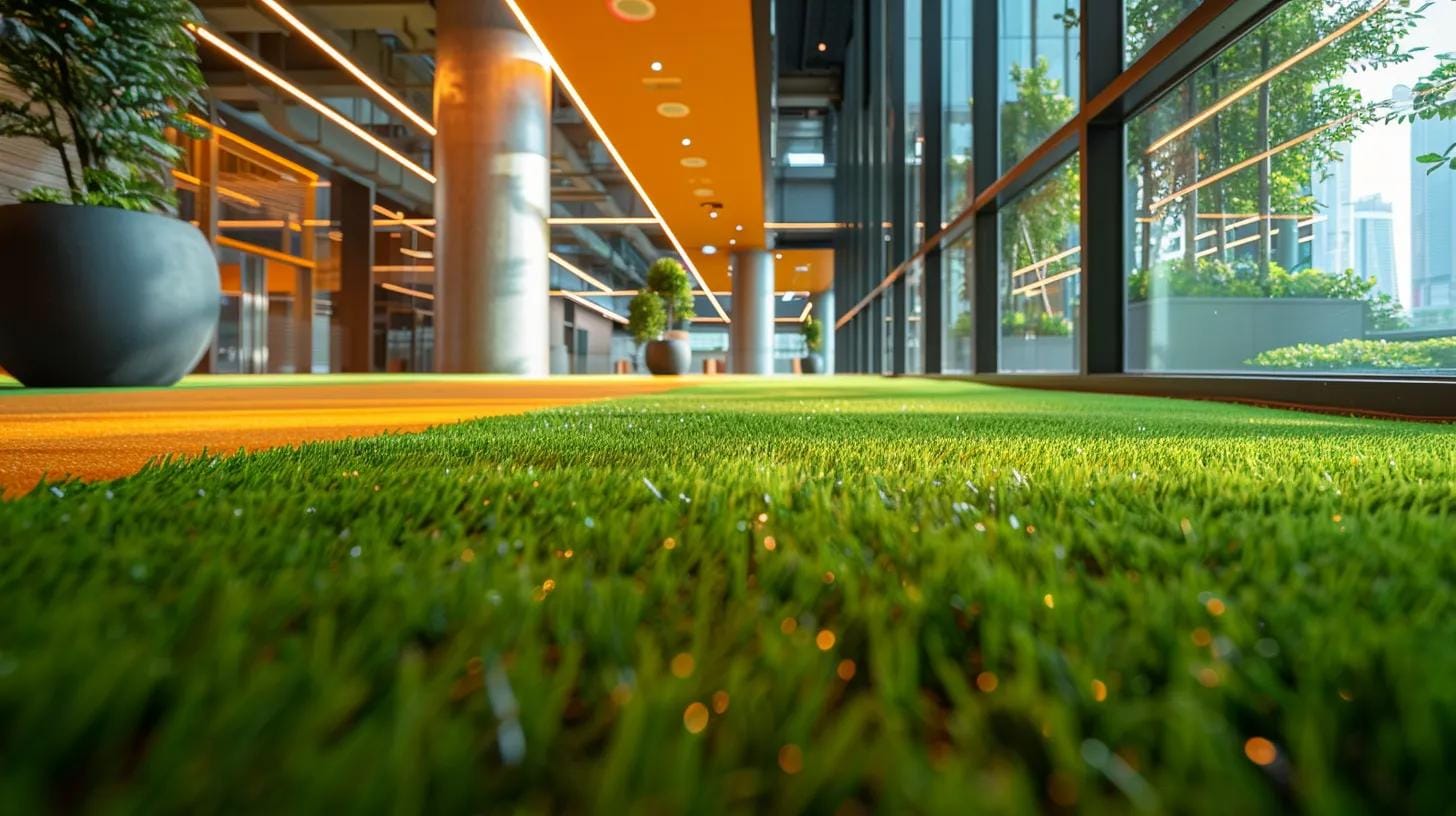
A successful artificial turf installation starts with thorough planning and careful site preparation. First, the project team surveys the area to map out slope, drainage patterns, and any existing underground utilities. All natural grass, roots, and debris are removed, and the soil is graded to create a smooth, consistent base. A layer of crushed stone or gravel is then spread and compacted to form a stable sub-base that promotes rapid water runoff and prevents future settling. Attention to grading at this stage ensures that rainwater won’t pool on the finished surface.
Customization for Roswell’s Climate and Soil
Roswell’s mix of hot summers and occasional heavy rains demands a turf system tailored to local conditions. Installers evaluate soil type and typical traffic loads to select turf fibers with the right density and pile height. UV-resistant blades are chosen to guard against fading in intense sunlight, while the infill material—often a blend of sand and rubber granules—is calibrated to provide cushioning and heat reduction.
Drainage layers, such as permeable fabrics or additional gravel trenches, are added where needed to channel water away from building foundations and paved areas. By matching turf specifications to site conditions, the installation team delivers a surface that stays green, drains well, and resists wear over years of commercial use.
Rolling Out and Seaming the Turf
Once the base is ready, large rolls of artificial grass are unrolled and carefully aligned to maintain consistent blade direction and color tone. Seams between strips are joined with specialized adhesives or industrial stitching, creating an almost invisible union that holds firm under foot traffic and vehicle weight. Installers stretch the turf to remove wrinkles and ensure a tight fit against curbs, planters, and other hardscape features. Any excess material is trimmed with precision tools, and edges are anchored with landscape spikes or metal edging anchored into the sub-base.
Infill, Brushing, and Final Inspection
Infill plays a key role in turf performance and longevity. A measured layer of sand—or a sand-rubber mix—is spread over the grass to support blade uprightness, improve resilience under load, and help disperse heat on sunny days. Installers use power brooms to work the infill into the turf fibers evenly, ensuring that each blade stands upright and that the surface remains level.
After brushing, the entire area is rinsed to remove installation dust and allow the infill to settle. A final inspection checks for uniform pile height, secure seams, and correct drainage flow. Any minor adjustments—such as topping up infill or tightening seams—are made before the surface is handed over for use.
How Does Artificial Turf Provide Long-Term Cost Savings for Roswell Businesses?
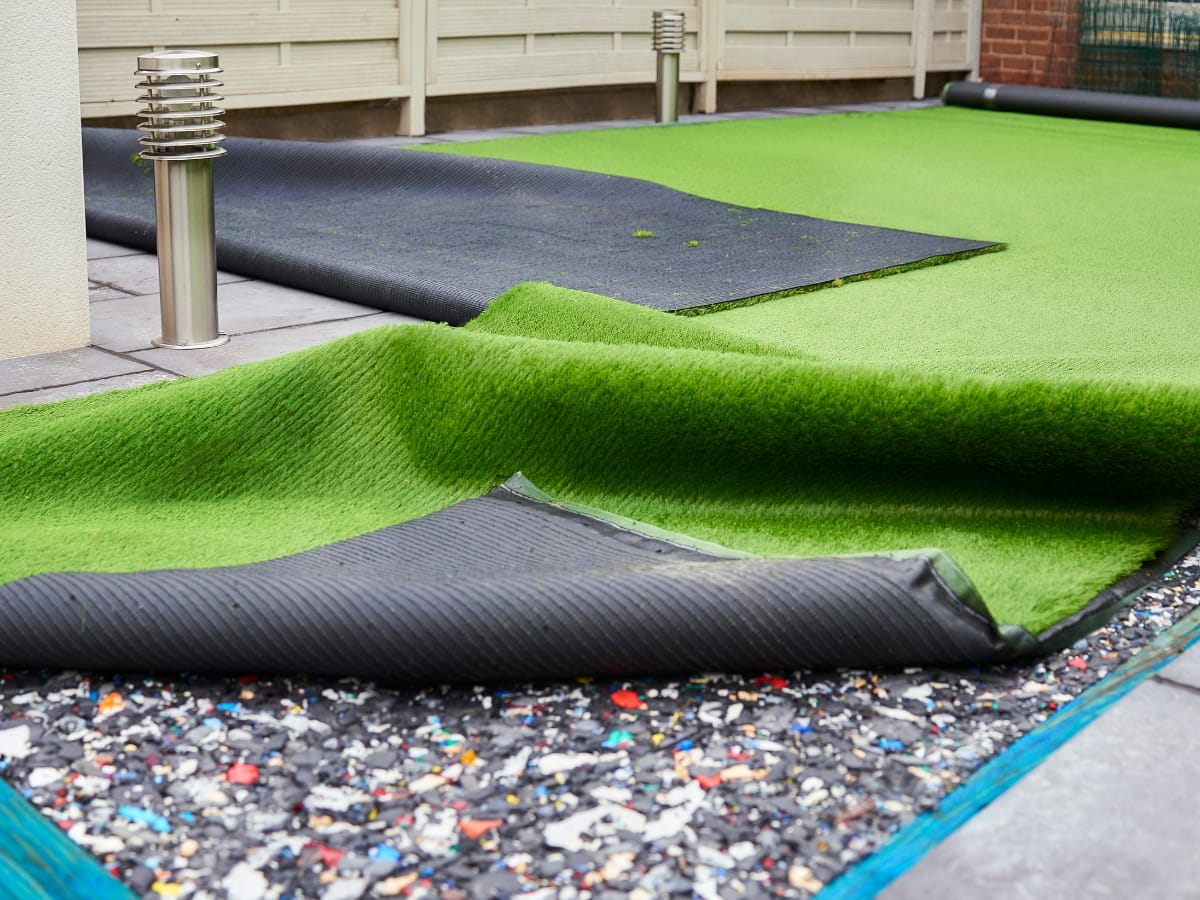
Investing in artificial turf involves higher upfront costs than establishing natural grass, but those expenses pay off over time. Commercial properties avoid regular mowing, edging, and fertilizing, and maintenance crews spend far less time managing synthetic lawns. Water bills drop dramatically when irrigation systems are downsized or decommissioned, especially during Roswell’s dry summers. Over a 10- to 15-year lifespan, these savings offset the initial installation, making artificial turf a financially sound choice for businesses focused on predictable operating expenses.
Comparing Maintenance Costs
Natural turf demands ongoing labor and materials: weekly mowing during the growing season, frequent watering, seasonal fertilization, and treatments for pests or weeds. Each of these tasks adds to annual budgets and can fluctuate with weather conditions. In contrast, artificial turf requires only occasional cleaning—typically a rinse to clear dust or debris—and periodic top-ups of infill material to maintain resilience. Studies show that maintenance costs for synthetic lawns can run up to 70 percent lower than those for natural grass, creating a stable and budget-friendly model for property managers.
Financial Incentives and Local Programs
Many municipalities in water-sensitive regions encourage drought-tolerant landscaping through rebates or tax credits. By replacing turf that requires irrigation with a zero-water alternative, businesses may qualify for these programs, further reducing overall costs. Property owners should check with local water authorities or municipal offices to learn about available incentives and eligibility requirements. Applying for these rebates can offset part of the installation cost, making artificial turf an even more compelling investment.
Design Flexibility and Ancillary Benefits
Beyond hard savings, artificial turf frees up resources for creative landscape enhancements. With less time spent on lawn care, maintenance staff can focus on adding native plant beds, decorative mulch borders or hardscape features that boost aesthetics and support sustainability goals. Synthetic grass also performs reliably in shaded or heavily used areas where natural grass struggles, ensuring a uniform appearance across the entire property. These design opportunities enhance customer and employee experiences without adding recurring lawn-care expenses.
Safety and Durability Features of Commercial-Grade Artificial Turf
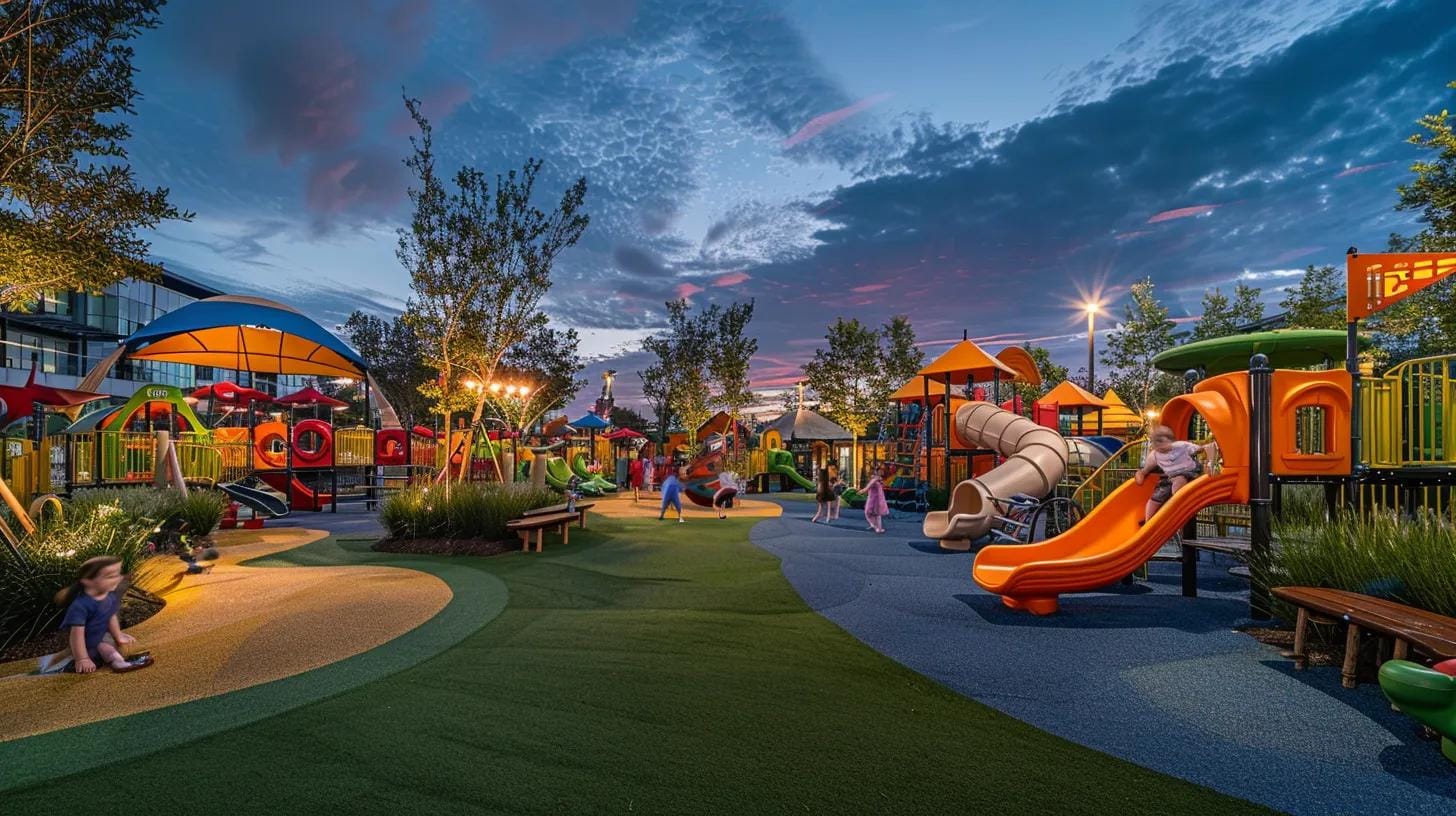
Commercial artificial turf is engineered to meet demanding safety and durability requirements without sacrificing appearance. Modern turf fibers—typically made from polyethylene, nylon or polypropylene—are specifically chosen for their resistance to UV degradation, heavy use and extreme weather. These synthetic materials retain color and structural integrity through years of sunlight exposure, rain and foot traffic. Behind the grass blades, multi-layered backing systems lock fibers in place and provide a stable base that resists matting and compaction, even under constant pressure.
Slip Resistance and Impact Cushioning
One of the most important safety considerations is slip resistance. High-quality turf systems use textured blade surfaces and specialized infill materials, such as rounded sand or coated rubber granules, to create a firm yet forgiving layer underfoot. This combination reduces the chance of slips and falls, especially in wet conditions or on sloped surfaces. Underneath, shock-absorbing pads or compacted aggregate layers further cushion impacts, making synthetic lawns safer for areas where employees or visitors walk, play, or dine outdoors.
Drainage and Weather Resilience
Effective drainage is crucial in commercial settings where water buildup can create hazards. Artificial turf installations integrate permeable backings and engineered sub-base layers that channel rainwater away rapidly, preventing puddles and reducing slip risks. These systems also protect the underlying soil and hardscape from erosion. In hot climates, infill materials can be selected to reflect heat or include cooling agents, keeping surface temperatures within comfortable limits even on the sunniest days. This resilience ensures the turf maintains both its look and functionality through seasonal extremes.
Non-Toxic and Low-Allergen Surfaces
Unlike natural grass, synthetic turf does not require pesticides or fertilizers, which eliminates a major source of chemical exposure. The fibers themselves undergo rigorous safety testing to ensure they are free from heavy metals, lead, and other toxins. This makes artificial lawns ideal for dining patios, outdoor break areas, and children’s play zones in commercial environments. Because there is no soil, allergen particles like pollen stay on the surface, where they can be rinsed away easily, offering relief for those with sensitivities.
Longevity and Easy Maintenance
Durability translates to long service life. A professionally installed turf system can last a decade or more without thinning or fading. Reinforced seams and strong stitching along edges prevent unraveling, even when benches, tables or machinery are placed on top. Regular maintenance is straightforward—occasional brushing to lift fibers, a rinse to clear debris and infill adjustments as needed. This minimal upkeep reduces labor expenses and keeps outdoor spaces safe and attractive without frequent repairs or surface replacement.
Versatility for High-Traffic Commercial Spaces
From hotel courtyards and office plazas to restaurant terraces and retail walkways, artificial turf adapts to diverse layouts and use patterns. It can be tailored to fit around planters, seating areas, or playground equipment, creating seamless transitions between green surfaces and hardscapes. Customizable blade heights and infill densities allow property managers to strike the right balance between lush appearance and functional performance. Whether lining pedestrian paths or covering large event lawns, commercial turf delivers consistent safety and durability under heavy, continuous use.
How Roswell Businesses Choose the Right Artificial Turf

Selecting the right artificial turf means matching your property’s daily demands with a surface that looks great and performs consistently. Start by defining how the space will be used. High-traffic zones—such as walkways, entry plazas or outdoor dining areas—call for turf with dense fiber construction and robust infill that resists compaction. In quieter spots, like planter borders or decorative strips, you can opt for softer blades and lighter infill that emphasize a natural appearance. By aligning turf density and pile height with activity patterns, you ensure both safety and longevity.
Balancing Appearance with Durability
Visual appeal remains a priority, even in heavy-use environments. Look for turf products that combine colorfast fibers with realistic blade shapes and mixed green tones to mimic natural grass. UV-stabilized yarns prevent fading under Roswell’s intense sun, while multi-layered backing systems lock fibers in place so they stand upright rather than matting down. Durable stitching at seams and edges keeps the turf looking seamless around planters, patio pavers, or seating areas. When appearance and toughness go hand in hand, your landscape maintains a polished look without constant repairs.
Considering Maintenance and Environmental Impact
One of artificial turf’s biggest advantages is its low upkeep. Unlike living lawns that demand mowing, watering and chemical treatments, synthetic grass needs only occasional rinsing to clear dust and debris and a periodic power-brushing to lift fibers. Infill levels can be topped up as needed to restore cushion and resilience. This minimal maintenance frees staff to focus on planting beds, hardscape details or seasonal displays. At the same time, turf eliminates irrigation costs and reduces runoff from fertilizers or pesticides. For businesses seeking sustainable landscapes, the water savings and chemical-free surface help meet environmental goals without sacrificing curb appeal.
Navigating Local Regulations
Before installation, confirm that your turf choice complies with Roswell’s zoning rules and building codes. Some districts require engineered drainage plans to prevent runoff, while others mandate disposal of removed topsoil or approval of materials for fire resistance. Working with contractors experienced in local guidelines ensures a smooth permitting process. Proper documentation of sub-base preparation, infill composition, and edge detailing also helps demonstrate compliance with sustainability standards or stormwater management regulations.
Frequently Asked Questions
Q: How does artificial turf help reduce maintenance costs for commercial properties? A: Artificial turf cuts out the need for regular mowing, watering, and chemical treatments. Property managers save on labor and equipment expenses since there is no grass to trim or irrigation systems to run. Eliminating fertilizers and weed control also reduces chemical purchases. Over time, these savings add up, allowing businesses to allocate budget toward other landscape improvements or amenities without sacrificing a well-kept exterior.
Q: What environmental benefits does using artificial turf provide? A: Synthetic grass reduces water consumption dramatically, especially in regions with hot, dry summers. Without live turf, there is no need for sprinkler systems or hand-watering, which conserves local water supplies. The absence of fertilizers and pesticides means runoff that reaches storm drains or nearby streams remains cleaner. Many modern turf products use recyclable materials and offer recyclable end-of-life options, further minimizing environmental impact compared to traditional lawns.
Q: Is artificial turf suitable for all commercial spaces in Roswell? A: Artificial turf adapts well to a variety of settings, from office parks and retail plazas to outdoor dining patios and pedestrian walkways. Its built-in drainage systems handle heavy rain, preventing puddles and slip hazards. Traffic-grade turf tolerates constant footfall and even light vehicle loads, making it a reliable choice for parking lot islands or event lawns. Because it maintains a uniform appearance year-round, synthetic turf helps properties project a professional image regardless of the season.
Q: How long does the installation process usually take for commercial projects? A: The timeline depends on site size and site conditions, but most commercial installations finish between two and seven days. Initial work involves removing existing vegetation and debris, grading the soil and installing a compacted gravel base. Once the base is ready, turf rolls are laid, seamed and secured, followed by infill application and final grooming. Experienced crews coordinate with other contractors—such as hardscape teams—to minimize downtime and deliver a finished surface that can be used almost immediately.
Q: Can local regulations affect the installation of artificial turf? A: Absolutely. Local zoning rules and building codes can influence drainage requirements, material disposal, and surface elevations. Permits may be required for significant landscape alterations or water management changes. Working with contractors who understand Roswell’s regulations ensures proper sub-base design, adequate stormwater handling, and compliance with any environmental standards. This upfront planning prevents delays and helps the finished turf meet municipal guidelines without costly adjustments.
Q: What safety features does artificial turf offer in commercial environments? A: High-quality turf includes textured fibers and appropriate infill materials that create a slip-resistant surface, even in wet conditions. Underneath, compacted aggregates or shock-absorbing pads cushion impacts, reducing the risk of slips and falls. Because there is no soil or organic thatch layer, turf stays free of uneven patches and sudden divots. Manufacturers also test fibers for non-toxicity and minimal heat retention, making synthetic lawns safe.
Q: Are there any financing or rebate programs available for artificial turf installation? A: Some local and state agencies offer rebates or tax incentives to encourage water-saving landscaping. By swapping out a high-water grass lawn for a zero-water synthetic surface, property owners may qualify for these programs. Eligibility varies by municipality, so it is wise to review local utility or environmental agency resources. In many cases, the savings from reduced water bills combined with available rebates can significantly offset the initial installation cost, boosting long-term return on investment.
Final Thoughts
Artificial turf offers Roswell businesses the perfect combination of pristine aesthetics and hassle-free maintenance—saving you time, water, and money while keeping your property looking sharp year-round. At Glover Landscapes, we specialize in high-quality artificial turf installations designed to withstand heavy foot traffic and maintain their vibrant appearance with zero upkeep. Ready to transform your commercial space? Call us today at (404) 510-6437 or visit our website to request your free estimate. Let Glover Landscapes help you create a low-maintenance, high-impact outdoor environment that impresses clients and employees alike.
